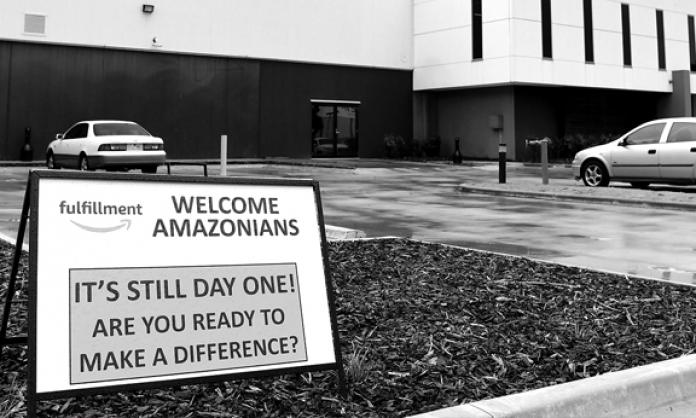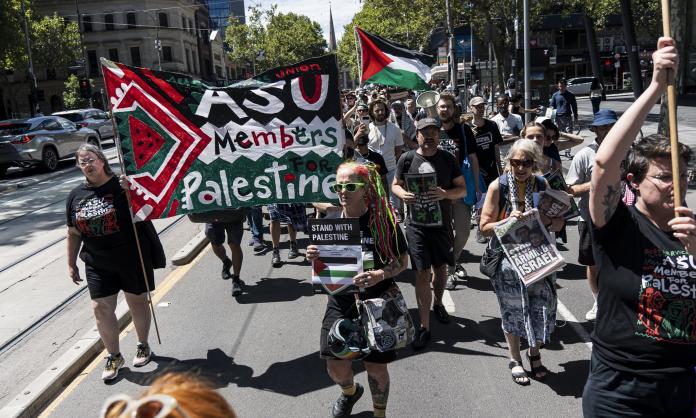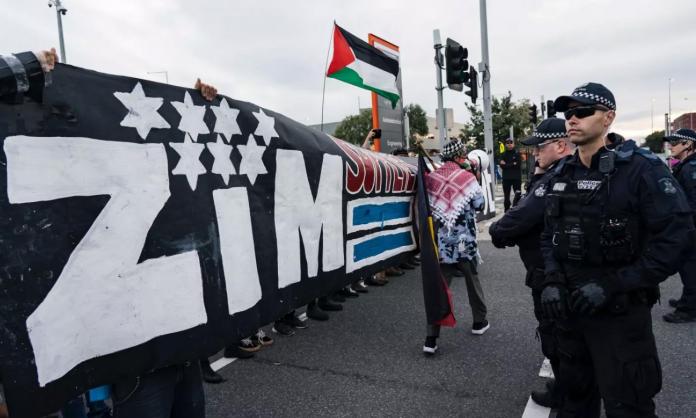It has been 10 months since the portentous opening of Amazon’s first Australian “fulfilment centre” in Dandenong, south-east of Melbourne. A second warehouse, twice the size, opened in August in the suburbs of Sydney. Wide selections of goods and fast delivery times, however, are not the only business practices that the online giant has imported.
Amazon has made headlines worldwide for low pay and poor working conditions. It’s now shown that the Australian branch intends to treat its workers no better.
Amazon is only the second trillion-dollar company in history. It has become so in large part by paying wages that leave many of its employees languishing below the poverty line.
In recent weeks the company raised its UK and US wages to (a still paltry) US$15 due to a combination of public pressure, a tighter labour market in those places and a shift of emphasis towards technology. Amazon workers in Australia, however, have received no such pay rise – they make only a few cents above the legal minimum.
According to an Amazon worker who spoke to Red Flag, who I’ll call Kim, the company’s exorbitant market value and the low wages are “two sides of the same coin”.
“Bezos is wealthy because of how little we are paid. You feel spit on your face every day you are there because you know how much money he is making off of you every second.”
The founder and CEO of Amazon, Jeff Bezos, is the richest person alive. He “earns” the annual wage of a warehouse worker every 11 seconds.
Amazon also enforces notoriously Orwellian security and surveillance measures against its workforce. Workers must pass through a metal detector whenever they leave work or go on a break, which requires removing steel-capped boots and anything else that might set off the detector.
“Your break starts when you’ve scanned your last object”, says Kim, “not when you get to break room. It’s probably a five or six minute round trip to walk through the warehouse, scan out, take your shoes off and get through the detector. That time comes out of your [15 minute] break”.
Anyone who accidentally sets off the detector is treated to an airport security style search with a hand-held detector.
According to Kim, “The entire process is demeaning and takes more time off your break. One of my workmates jokes about it being like prison”.
But prisoners aren’t made to celebrate their own incarceration. That indignity is reserved for Amazon workers. Before each shift they must form a circle, and sometimes jump in the air and shout corporate buzzwords, such as “Quality!”, “Success!”, “Amazon!”, or “Prime!”. After seeing this for the first time, a workmate turned to Kim and asked, “When do we get to drink the Kool Aid already?”
Workers are surveilled in one form or another the entire time they are at work. There are cameras spread throughout the warehouse, and the location of every worker on the floor is tracked by the electronic scanners that they must carry with them. A small clock on the screen of the scanner counts down how long the worker has before they must get to the next location. Repeated failure to scan the item at the next location in time regularly results in disciplinary discussions with management and cuts to shifts.
The pace of work can be brutal. Amazon workers can walk 20 to 30 kilometres per shift, while pushing a trolley and performing the types of repetitive motions that are known to lead to repetitive strain and other injuries.
Management’s capacity to push the workers in this fashion is made easier because there are no permanent jobs in Amazon’s warehouses. None. All workers are employed casually by Adecco, a third party labour hire company.
Amazon workers have no idea how many shifts they will be getting the following week. They can be called in or their shifts can be cancelled with little notice, and they can be sent home early if they underperform. Perversely, they can also be sent home if they overperform; that is, if they finish the day’s work early, they may be sent home without pay.
Attempts to organise Amazon warehouses internationally have had mixed success. In May the company was forced to sign its first ever agreement with Italian union Filcams Cgil Nazionale after Italian and German warehouse workers staged a series of joint strikes late last year. However, even after dozens of strikes and protests in its German, Spanish and Polish fulfilment centres in recent years, Amazon has not signed a single union agreement in any other country.
In Australia it has refused to recognise or negotiate with the National Union of Workers – the union that covers most warehouse workers in Victoria. Workers at the company’s Dandenong centre report that, whenever a union organiser attempts to talk to them in the tea room, it is suddenly flooded with managers who wouldn’t normally eat there.
According to NUW organiser Teagan Milliken, casualisation is a key issue for Amazon workers.
“The number one issue is creating permanent jobs for all workers. Amazon has been very clear from the start that it will be all casual. We cannot allow a company of this size to come here and tear up all of the conditions that we’ve fought for”, she told Red Flag.
Although the struggle to unionise Amazon, both in Australia and elsewhere, will certainly be a challenge, Kim is able to take some inspiration from the fights of fellow Amazon employees overseas.
“The wins internationally have shown that fighting gets the goods. We can beat them if we are organised and stick together. It doesn’t matter that they are in other countries; we may as well all be working at the same centre in Dandenong or Sydney. We are all in the same situation and fighting the same system.”










